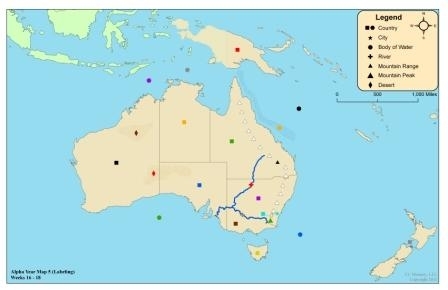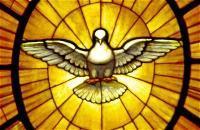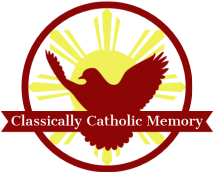FAQs, or Frequently Asked Questions, are below that we have received from families over the years.
Where do I start?
The four years of the CCM program can be done in any order. However, there are certain aspects of the program you may want to consider when deciding where to start. History and science have a specific focus in each of the four “years” of CCM. Do you put a lot of emphasis on history in your homeschooling? Then pick according to the history focus. If you put more emphasis on science, pick according to the science topic.
The history sentences in Alpha year focus on ancient times (Creation up to the birth of Christ). History in Beta year traces the Middle Ages; early modern times (1500 to 1800) are covered in Gamma year; and Delta year’s history sentences focus on later modern times (1800 to the present). If your children will be studying the ancients in history, then choosing Alpha year makes sense. If they will be studying the founding of our country, the history sentences from Gamma year are drawn from that time period and will reinforce what the children are reading and learning about in their history curriculum.
Science topics in each of the four years are as follows: Alpha year—Life Science (animals); Beta year—Earth science and astronomy; Gamma year—chemistry and physics; Delta year—Life Science (plants and human anatomy and physiology). If you put a lot of emphasis on science, you could pick whichever CCM year will best reinforce what your children will be learning in their science curriculum.
What about Geography?
Doesn’t geography focus on a specific continent in each CCM year? What if I want to pick one year because of the history focus, but I’d rather my children learn the geography of a continent covered in a different year?
Yes, each CCM “year” focuses on the geography of one or two continents. Alpha year covers Asia and Australia; Beta year covers Europe; Gamma year covers North America; and Delta year covers South America and Africa. The geographical locations learned each year are listed in the appropriate year’s student text (on each week’s summary sheet, on the individual geography pages, and in the appendix) and are also recorded on the CD set for that particular year. However, the children actually learn the geography by using the map set (placing the sticker labels of each location correctly on the “labeling” side of the map, studying the maps, and tracing the borders of each country on the “tracing” side of each map). Therefore, it is easy to “mix” particular CCM years with any map set you would like. If you really want to start with Alpha year because your children are studying the ancient Greeks and Romans in history, but you would rather your children learn the countries and physical geography of Europe (Beta year map set) rather than the countries of Asia and Australia (Alpha year map set), you may order an Alpha year student text, teacher text, and CD set, but order a Beta year map set rather than the Alpha year map set. The Alpha year student text will contain different geographical locations than your children are learning, but the children will not be studying those pages in the text anyway. The map set, not the student text, is what is primarily used to study the geography. The geographical locations are listed in the student text just for the sake of completeness, but they are simply listings; the children do not learn where France is, for example, by looking at “France” listed on a page; they only learn where it is by studying a map. Similarly, the names of the locations will be said on the CD set for the appropriate year, but if you have chosen the map set for a different year, simply skip the geography tracks on the CD. As long as you have bought the correct map set for the continents you want your children to learn, that is all that matters.
How do I "fit" CCM into my homeschool?
I’m not sure how to make CCM “fit” with our other homeschooling work. What if the history memory work we are doing in a particular week doesn’t match what we are reading about in history that week?
CCM can coordinate well with any history program you are using. It is helpful if you choose the CCM year that matches the history time period being studied in whatever other history curriculum you have chosen. However, it is not necessary to try to make it “match”, topically, week by week. For example, if you are studying the Middle Ages using a particular history curriculum, you will move chronologically through the Middle Ages during that school year. If you have chosen CCM’s Beta year, the history sentences will also move chronologically through the Middle Ages. You may get to certain topics in your history curriculum several weeks, or even a couple of months, earlier (or later) than you reach them in the CCM history sentences. However, it has been our experience that this is not a drawback at all, and isn’t something that needs to be “fixed”. If you have already studied the Battle of Hastings in your history curriculum, and then reach the CCM history sentence on that topic a month later, the children will already be familiar with the event--the CCM history sentence will serve as a great review of the basic facts of that event. Alternatively, you may reach the CCM history sentences that focus on the Battle of Hastings several weeks before you actually study it in your history curriculum. Great! Your children will fix the most important facts in their minds, and they’ll be ready to dive into reading about it more deeply a few weeks later or whenever you get to it in your history curriculum. Either way, they’re getting a built-in review of the material.
More FAQs
I see that each CCM year provides 18 weeks of memory work. Does that mean if we start in September we’ll be done in January?
We recommend that most families take two weeks to master the material in one “week” of the CCM program. The material is challenging, and we have found from experience that our children did better when we spent two weeks, rather than one, on each week of the program. If you follow this plan, then it will take you 36 weeks—a standard school year--to finish each year of the program. Of course, you have the option to go through the material as quickly as you like. You could, for instance, use the summer to complete a year of the program (spending just one week on each week’s memory work) then move on to the next year in the fall, perhaps slowing your pace and spending two weeks on each week’s memory work. You can also be flexible as your year progresses, moving more quickly when it suits you, and more slowly when you need to.
Do I need both the Student Text and the Teacher Text? What is the difference between them? Does each of my children need his/her own Student Text?
First, see the “Overview of Materials” page to read about the Student Text and Teacher Text. The Teacher Text contains the entire Student Text within it, in a shrunken form, plus all of the additional information listed under “Teacher Text”. If your children are young enough that they either cannot read the Student Text themselves, or will not be studying it independently, it may make sense to just buy the Teacher Text rather than the Student Text, since you will be the only one using it. You will have all of the information to present to them, plus the suggested science and math activities, background information for history, and other teaching tips.
However, if your children are old enough that they can read the Student Text and do some independent study, it is helpful if they have the Student Text. The presentation of the material in the Student Text is large, clear, and attractive, and the child would not be distracted by the smaller size “teaching notes” that are found in the Teacher Text. It is not necessary to have more than one Student Text per family, although it can be helpful if you have several older children who will be studying it independently, or are participating in a co-op where each child may need to bring a Student Text to class.
How are the maps used? I am confused by the sticker labels that came with the map set—all the locations for one week are on one large sticker. Are the sticker labels re-positionable?
You will need to cut apart the sticker labels for the week in advance. This is easy to do. First, cut each individual label apart from the others, trimming it closely so there isn’t much white space around it. This is to ensure it will fit on the location on the map without covering up another location that might be nearby. Then, peel the backing off of each individual sticker. Lastly, stick the labels on a piece of wax paper and hand them to the student. To make things easier, you may want to cut the labels and place them on wax paper well in advance, perhaps doing several weeks at a time and storing them in an envelope or box.
When the new geography work for the week is presented, the child should place the sticker labels on the appropriate location. Each sticker label has a particular colored shape on it along with the name of a location. The map has that same colored shape on a particular location. The child will know where to place the sticker label by matching the colored shape on the label to the same colored shape on the map.

Note: The colored shapes are located on the “labeling” side of the map only. The sticker labels are not re-positionable; they are meant to be permanent. The child will spend the rest of the week simply studying the locations that have already been labeled on the map, and by tracing the borders of locations (see above).
Next, the child can turn the map over to the “tracing” side. Using a washable marker, he can trace the borders of the countries he is learning that week, saying the names quietly to himself as he becomes familiar with the shape of that country. If he is working on physical geography that week, he can trace the rivers or mountains, or the borders of the country that the feature is located in, or the borders of the nearby countries. Then, simply use a damp cloth to wipe the map clean. Make sure that the child does not trace on the labeling side, however, as the dampness from wiping it clean may disturb the sticker labels. The child can continue to trace the borders every day as he studies the geography, and he can test himself on the locations by looking at the “tracing” side and saying the names of the locations, flipping the map over to check the labels to see if he’s correct.
How did CCM start?
Classically Catholic Memory began in 2009 in Austin, Texas, with a group of ten families who came together to pilot the program in a co-op setting. We wanted a program that would provide the basics for memory work for our homeschooled children. We wanted it to be comprehensive and challenging, and we wanted our children to have fun doing it! Most of all, we wanted to make sure that our Catholic Christian faith was integrated into the program. We wanted it to be woven throughout the subjects taught, particularly in history, Latin, and religion, and we wanted our children to grow in their faith through the contributions of all of our families. The year was a resounding success, and my husband and I were encouraged to make the program available to other homeschoolers. In 2021, Schola Rosa acquired CCM and is now selling our products.

Do you offer quantity discounts?
Yes, contact us for a discount.
Do you sell individual sticker sheets?
Yes, however, they are not available on our website. To order, please email us at scholarosa@gmail.com. The cost is $2 per sheet, plus $3 shipping.
Do you ship outside of the United States?
Yes. However, due to the higher shipping costs, please contact us at scholarosa@gmail.com to place your order so that we can provide you a quote on shipping.
Where can I find the tunes used for the History Sentences and the Skip Counting?
The tunes used for the History Sentences and the Skip Counting can be found on the back of the insert that came with the CDs.
What are the suggested ages/grade levels for the CCM program?
CCM was designed for children from ages 5 to 12. However, older children can certainly benefit from the program
Do you ever attend Catholic Homeschooling conferences?
Yes, Schola Rosa attends Catholic Conferences each year and will bring CCM materials along!
What's the difference between CCM and Schola Rosa Memory Work? Both programs use the original CCM content, but they are organized differently. CCM is a 4-year program that repeats; Schola Rosa is a 3-year program that repeats. Schola Rosa also substituted some of the Great Words II passages with historically applicable passages and did the same for History in Schola Rosa's Cycle 2 to fill out the focus on the Christian Age (Medieval period). Finally, in the Schola Rosa edition, you will find a Scripture passage and Catechism in each unit/week.
Still have questions?
Please contact Schola Rosa staff at 507-822-6966 or scholarosa@gmail.com
